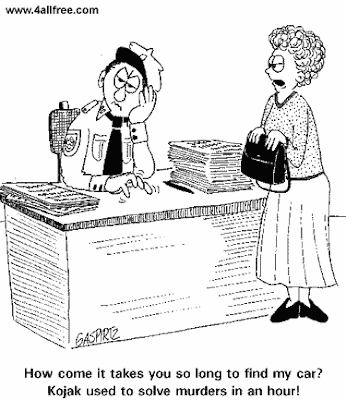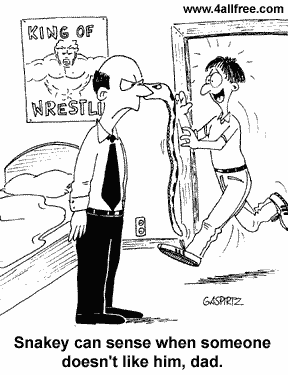Is anyone ever mention about Psychology of the jokes? Why peoples make a joke and laugh when hear a joke and so on? 
Why we laugh has been the subject of serious academic study, examples being:
* Immanuel Kant, in Critique of Judgement (1790) states that "Laughter is an effect that arises if a tense expectation is transformed into nothing." Here is Kant's two hundred and seventeen year old joke and his analysis:
"An Englishman at an Indian's table in Surat saw a bottle of ale being opened, and all the beer, turned to froth, rushed out. The Indian, by repeated exclamations, showed his great amazement. - Well, what's so amazing in that? asked the Englishman. - Oh, but I'm not amazed at its coming out, replied the Indian, but how you managed to get it all in. - This makes us laugh, and it gives us a hearty pleasure. This is not because, say, we think we are smarter than this ignorant man, nor are we laughing at anything else here that it is our liking and that we noticed through our understanding. It is rather that we had a tense expectation that suddenly vanished..."

* Henri Bergson, in his book Le rire (Laughter, 1901), suggests that laughter evolved to make social life possible for human beings.
* Sigmund Freud's "Jokes and their Relation to the Unconscious". (Der Witz und seine Beziehung zum Unbewußten).
* Arthur Koestler, in The Act of Creation (1964), analyzes humor and compares it to other creative activities, such as literature and science.
* Marvin Minsky in Society of Mind (1986).

Marvin Minsky suggests that laughter has a specific function related to the human brain. In his opinion jokes and laughter are mechanisms for the brain to learn nonsense. For that reason, he argues, jokes are usually not as funny when you hear them repeatedly.
* Edward de Bono in "The Mechanism of the Mind" (1969) and "I am Right, You are Wrong" (1990).
Edward de Bono suggests that the mind is a pattern-matching machine, and that it works by recognizing stories and behavior and putting them into familiar patterns. When a familiar connection is disrupted and an alternative unexpected new link is made in the brain via a different route than expected, then laughter occurs as the new connection is made. This theory explains a lot about jokes. For example:
* Why jokes are only funny the first time they are told: once they are told the pattern is already there, so there can be no new connections, and so no laughter.
* Why jokes have an elaborate and often repetitive set up: The repetition establishes the familiar pattern in the brain. A common method used in jokes is to tell almost the same story twice and then deliver the punch line the third time the story is told. The first two tellings of the story evoke a familiar pattern in the brain, thus priming the brain for the punch line.
* Why jokes often rely on stereotypes: the use of a stereotype links to familiar expected behavior, thus saving time in the set-up.
* Why jokes are variants on well-known stories (eg the genie and a lamp and a man walks into a bar): This again saves time in the set up and establishes a familiar pattern.
* In 2002, Richard Wiseman conducted a study intended to discover the world's funniest joke.
* Humor and Jokes have also been concluded to be logic that is completely random or vise versa.

Laughter, the intended human reaction to jokes, is healthful in moderation, uses the stomach muscles, and releases endorphins, natural happiness-inducing chemicals, into the bloodstream.
One of the most complete and informative books on different types of jokes and how to tell them is Isaac Asimov's Treasury of Humor (1971), which encompasses several broad categories of humor, and gives useful tips on how to tell them, whom to tell them to, and ways to change the joke to fit one's audience.







* Marvin Minsky in Society of Mind (1986).

Marvin Minsky suggests that laughter has a specific function related to the human brain. In his opinion jokes and laughter are mechanisms for the brain to learn nonsense. For that reason, he argues, jokes are usually not as funny when you hear them repeatedly.
* Edward de Bono in "The Mechanism of the Mind" (1969) and "I am Right, You are Wrong" (1990).
Edward de Bono suggests that the mind is a pattern-matching machine, and that it works by recognizing stories and behavior and putting them into familiar patterns. When a familiar connection is disrupted and an alternative unexpected new link is made in the brain via a different route than expected, then laughter occurs as the new connection is made. This theory explains a lot about jokes. For example:
* Why jokes are only funny the first time they are told: once they are told the pattern is already there, so there can be no new connections, and so no laughter.
* Why jokes have an elaborate and often repetitive set up: The repetition establishes the familiar pattern in the brain. A common method used in jokes is to tell almost the same story twice and then deliver the punch line the third time the story is told. The first two tellings of the story evoke a familiar pattern in the brain, thus priming the brain for the punch line.
* Why jokes often rely on stereotypes: the use of a stereotype links to familiar expected behavior, thus saving time in the set-up.
* Why jokes are variants on well-known stories (eg the genie and a lamp and a man walks into a bar): This again saves time in the set up and establishes a familiar pattern.
* In 2002, Richard Wiseman conducted a study intended to discover the world's funniest joke.
* Humor and Jokes have also been concluded to be logic that is completely random or vise versa.

Laughter, the intended human reaction to jokes, is healthful in moderation, uses the stomach muscles, and releases endorphins, natural happiness-inducing chemicals, into the bloodstream.
One of the most complete and informative books on different types of jokes and how to tell them is Isaac Asimov's Treasury of Humor (1971), which encompasses several broad categories of humor, and gives useful tips on how to tell them, whom to tell them to, and ways to change the joke to fit one's audience.

















0 comments:
Post a Comment